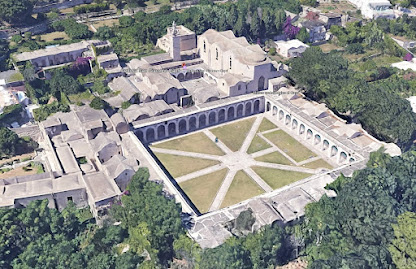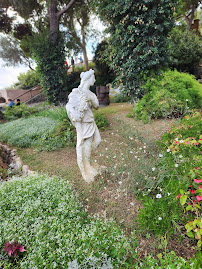It was said that German industrialist and steel magnate, Mr. Friedrich Alfred Krupp who frequently visited Capri in the early 20th century was deeply captivated by the island's beauty. He acquired a piece of the land and decided to develop a property overlooking the Mediterranean Sea. He created a private estate and gardens that captured the beauty of Capri.
After Krupp died in 1902, the gardens were acquired by the City of Capri and renamed "Gardens of Augustus" in honour of Emperor Augustus, the first Roman Emperor. It was said that Emperor Augustus visited Capri and exchanged land on the mainland for the island due to its beauty.
Beside Emperor Augustus, Roman Emperor Tiberius too had lived on the island of Capri for nearly a decade in the final years of his reign. It was said that after he became increasingly disillusioned with life in Rome, Tiberius moved to Carpi around 26 AD where he spent his last 11 years of his life until his death in 37 AD.
The gardens eventually was opened to the public. Since then, the gardens have become one of Capri's most beloved attractions!


An iconic man-made landmark is the access path that crisscrossed the hillside overlooking the Mediterranean Sea. The winding path originally built by Krupp was named "Via Krupp", It connects his hilltop estate to Marina Piccola, a small harbour below. This path carved into the cliffside is known for its numerous hairpin turns. The path adds to the gardens' charm and is both an architectural and engineering feat!
I managed to walk the very top portion of the path and crossed the uppermost hairpin. Had it not because of the limited time, I would probably have ventured down further to cross a few more hairpins!
****************************************************
The gardens were designed to harmonize with the natural landscape of Capri, featuring terraces that descend toward the sea, interconnected by paths and stairways. The layout was deliberately planned to highlight the panoramic vistas and maximize views over the iconic landmarks of Capri. Capri are known for the lush Mediterranean flora, including geraniums, dahlias and vibrant bougainvillea, arranged in terraces that follow the island's natural slope.
The gardens also offer some of the best views of Capri's famous Faraglioni rock formation and Marina Piccola.
 |
| The famous Faraglioni rock formation in the sea seen at upper right. |
 |
| Marina Piccola Bay. |
****************************************************
According to the local tour guide, Capri is a favorite destination for celebrities seeking luxury and privacy. An internet search revealed that Mariah Carey, a renowned singer; Sophia Loren, the Italian actress and Giorgio Armani, a fashion designer are some of the celebrities who have residential homes in this island.
One may need to fork out Euro 16 million or RM75 million or more just for a piece of residential lot or a house which command panoramic view of the Mediterranean Sea.
As I surveyed the hillside houses, I saw this rather unusual short rounded end spire on a mini dome on top of a building hidden in thick vegetation. I discovered later that this is the Certosa di San Giacomo or the Charterhouse of St. James. This is the oldest and most historical landmarks on the island of Capri. It was founded in 1371 as a monastery for Carthusian monks. The massive complex served as a center for monastic life, spiritual contemplation and scholarly activities. The complex has several structures including:
- The Church: A simple, Romanesque-Gothic structure with minimal decoration, typical of Carthusian architecture.
- The Cloisters: The Certosa features both a larger, more open cloister and a smaller, more intimate cloister used by the monks for reflection.
- The Refectory and Library: Areas where the monks ate and studied.
 |
| The complex as seen in Google Map. |


.jpg)





.jpg)

No comments:
Post a Comment